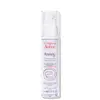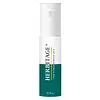What's inside
What's inside
 Key Ingredients
Key Ingredients

 Benefits
Benefits

 Concerns
Concerns

 Ingredients Side-by-side
Ingredients Side-by-side

Water
Skin ConditioningTriethylhexanoin
MaskingCyclopentasiloxane
EmollientCetearyl Alcohol
EmollientCyclohexasiloxane
EmollientCeteareth-20
CleansingPolymethyl Methacrylate
Ceteareth-33
CleansingCaprylic/Capric Triglyceride
MaskingAmmonium Acryloyldimethyltaurate/Vp Copolymer
Oenothera Biennis Oil
EmollientPhenoxyethanol
PreservativeBenzoic Acid
MaskingDisodium EDTA
Retinal
Skin ConditioningTocopheryl Glucoside
EmollientOleoyl Dipeptide-15
Skin ConditioningMica
Cosmetic ColorantSodium Hydroxide
BufferingSilica
AbrasiveBHT
AntioxidantOleoyl Tetrapeptide-31
AntioxidantTocopherol
AntioxidantTitanium Dioxide
Cosmetic ColorantCaramel
Cosmetic ColorantCI 17200
Cosmetic ColorantWater, Triethylhexanoin, Cyclopentasiloxane, Cetearyl Alcohol, Cyclohexasiloxane, Ceteareth-20, Polymethyl Methacrylate, Ceteareth-33, Caprylic/Capric Triglyceride, Ammonium Acryloyldimethyltaurate/Vp Copolymer, Oenothera Biennis Oil, Phenoxyethanol, Benzoic Acid, Disodium EDTA, Retinal, Tocopheryl Glucoside, Oleoyl Dipeptide-15, Mica, Sodium Hydroxide, Silica, BHT, Oleoyl Tetrapeptide-31, Tocopherol, Titanium Dioxide, Caramel, CI 17200
Water
Skin ConditioningNiacinamide
SmoothingGlycerin
HumectantAscorbyl Glucoside
AntioxidantButylene Glycol
HumectantLactobacillus/Pumpkin Fruit Ferment Filtrate
Skin ConditioningMoringa Oleifera Seed Oil
EmollientOenothera Biennis Oil
EmollientBisabolol
MaskingBakuchiol
AntimicrobialSimmondsia Chinensis Seed Oil
EmollientBromelain
Skin ConditioningTocopheryl Acetate
AntioxidantPhenoxyethanol
PreservativeC13-14 Isoparaffin
EmollientSodium PCA
HumectantUrea
BufferingCetyl Alcohol
EmollientGlyceryl Stearate
EmollientPortulaca Oleracea Extract
Skin ConditioningAllantoin
Skin ConditioningDisodium EDTA
BHT
AntioxidantPEG-75 Stearate
Hydroxyethylcellulose
Emulsion StabilisingXanthan Gum
EmulsifyingGossypium Herbaceum Extract
Skin ConditioningDipotassium Glycyrrhizate
HumectantCentella Asiatica Extract
CleansingRetinal
Skin ConditioningTrehalose
HumectantC9-11 Pareth-6
EmulsifyingCeteth-20
CleansingSteareth-20
CleansingPropanediol
SolventTriethanolamine
BufferingSalix Alba Bark Extract
AstringentSodium Hyaluronate
HumectantPolyquaternium-51
Skin ConditioningGluconolactone
Skin ConditioningTriacetin
AntimicrobialGardenia Jasminoides Fruit Extract
Cosmetic ColorantSodium Benzoate
MaskingCalcium Gluconate
HumectantPolyacrylamide
Water, Niacinamide, Glycerin, Ascorbyl Glucoside, Butylene Glycol, Lactobacillus/Pumpkin Fruit Ferment Filtrate, Moringa Oleifera Seed Oil, Oenothera Biennis Oil, Bisabolol, Bakuchiol, Simmondsia Chinensis Seed Oil, Bromelain, Tocopheryl Acetate, Phenoxyethanol, C13-14 Isoparaffin, Sodium PCA, Urea, Cetyl Alcohol, Glyceryl Stearate, Portulaca Oleracea Extract, Allantoin, Disodium EDTA, BHT, PEG-75 Stearate, Hydroxyethylcellulose, Xanthan Gum, Gossypium Herbaceum Extract, Dipotassium Glycyrrhizate, Centella Asiatica Extract, Retinal, Trehalose, C9-11 Pareth-6, Ceteth-20, Steareth-20, Propanediol, Triethanolamine, Salix Alba Bark Extract, Sodium Hyaluronate, Polyquaternium-51, Gluconolactone, Triacetin, Gardenia Jasminoides Fruit Extract, Sodium Benzoate, Calcium Gluconate, Polyacrylamide
Alternatives
Ingredients Explained
These ingredients are found in both products.
Ingredients higher up in an ingredient list are typically present in a larger amount.
BHT is a synthetic antioxidant and preservative.
As an antioxidant, it helps your body fight off free-radicals. Free-radicals are molecules that may damage your skin cells.
As a preservative, it is used to stabilize products and prevent them from degrading. Specifically, BHT prevents degradation from oxidation.
The concerns related to BHT come from oral studies; this ingredient is currently allowed for use by both the FDA and EU.
However, it was recently restricted for use in the UK as of April 2024.
Learn more about BHTDisodium EDTA plays a role in making products more stable by aiding other preservatives.
It is a chelating agent, meaning it neutralizes metal ions that may be found in a product.
Disodium EDTA is a salt of edetic acid and is found to be safe in cosmetic ingredients.
Learn more about Disodium EDTAOenothera Biennis Oil is the fixed oil derived from the seeds of the Evening Primrose.
Evening primrose oil is rich in fatty acids. These fatty acids include linoleic (60-85%), oleic (5-12%), palmitic (4-10%), and stearic (2-4%).
The fatty acid composition makes it a great ingredient for soothing and moisturizing skin. However, it may not be Malassezia folliculitis, or fungal acne safe.
Further research is needed on the role of evening primrose in treating eczema.
Evening primrose is native to North America.
Learn more about Oenothera Biennis OilPhenoxyethanol is a preservative that has germicide, antimicrobial, and aromatic properties. Studies show that phenoxyethanol can prevent microbial growth. By itself, it has a scent that is similar to that of a rose.
It's often used in formulations along with Caprylyl Glycol to preserve the shelf life of products.
Retinal is a form of retinoid. Retinoids are the gold-standard class of anti-aging ingredients.
Retinal has many benefits as other retinoids: improve skin texture, reduce large pores, reduce the effects of aging, reduce the visibility of dark spots, heal scars, and fight acne.
Studies show retinal may work at a faster rate than retinol due to its structure.
All retinoids have to be converted into retinoic acid before starting to work. Some retinoids take several steps of conversion before binding. Retinal is only one step away, making it more potent.
Like other retinoids, retinal may be irritating. It is best to ease into using this ingredient frequently.
Using the 'ramp up' method, start by using retinol once a week. This gives your skin time to adjust and decrease irritation. Once you feel ready, you can slowly increase the frequency of retinol use.
Using retinoids will increase sun-sensitivity in the first few weeks of use. Though studies show retinoids increase your skin's natural SPF with continuous use, it is best to always wear sunscreen and sun-protection.
Learn more about RetinalWater. It's the most common cosmetic ingredient of all. You'll usually see it at the top of ingredient lists, meaning that it makes up the largest part of the product.
So why is it so popular? Water most often acts as a solvent - this means that it helps dissolve other ingredients into the formulation.
You'll also recognize water as that liquid we all need to stay alive. If you see this, drink a glass of water. Stay hydrated!
Learn more about Water